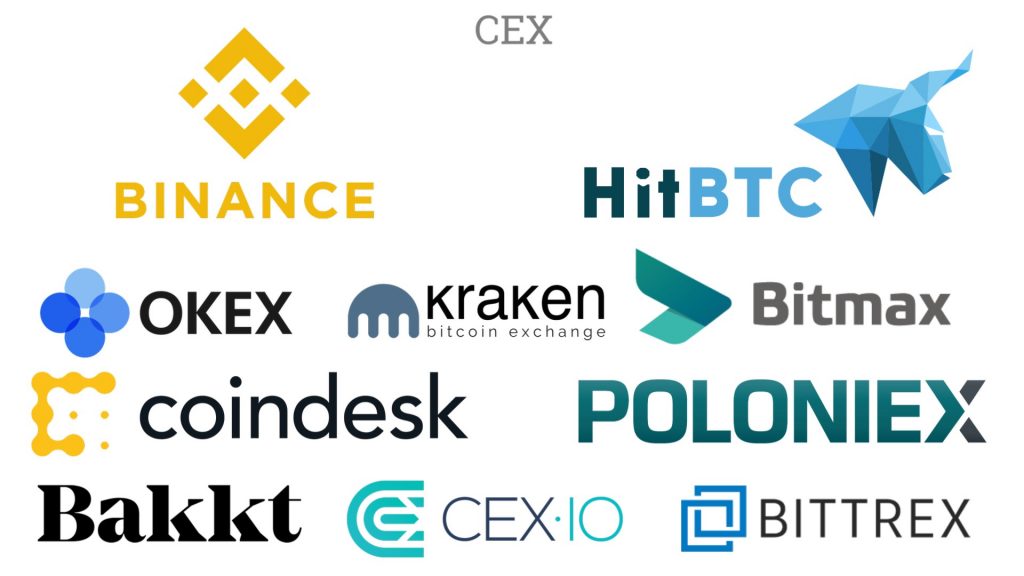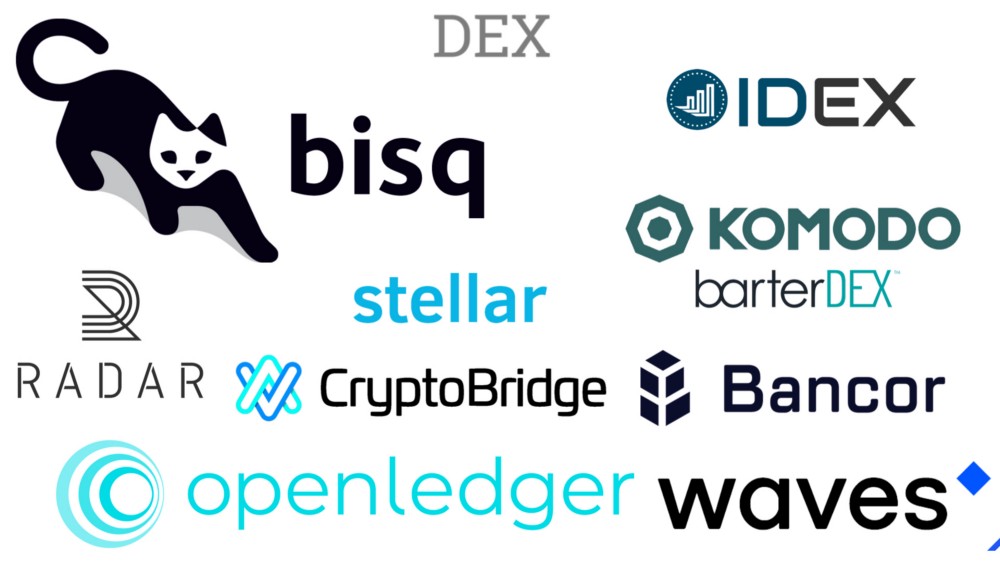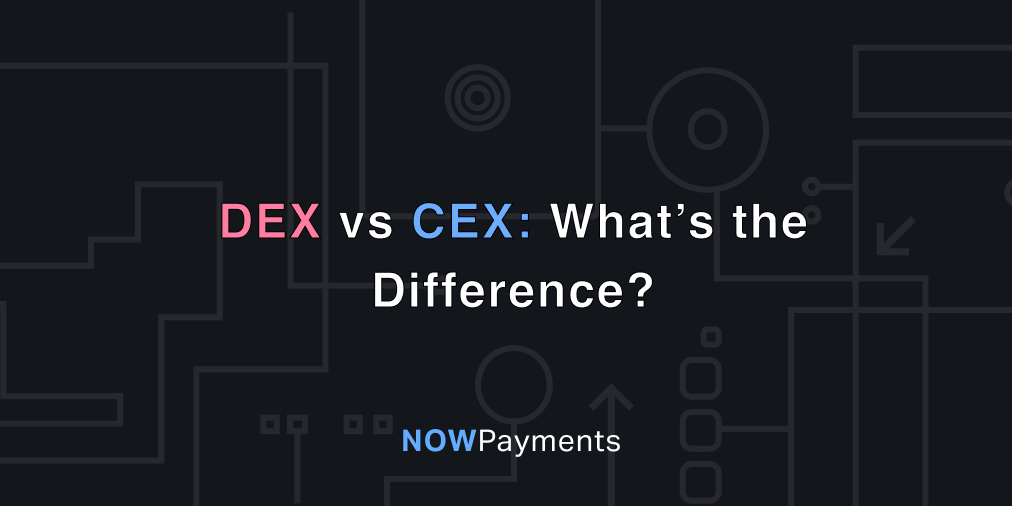Cryptocurrency trading and investments have become extremely popular in the last few years. While Bitcoin was invented in 2009, a decade later more than 5000 cryptocurrencies exist in the market today. With the rise in popularity of digital currencies, the supportive infrastructure for the crypto industry has also scaled. One of the infrastructures supporting the activity for crypto trading is cryptocurrency exchanges.

There are more than 300 centralized cryptocurrency exchanges, also known as CEX, that are operational in the crypto industry. They have played a key role in the mainstream adoption of digital currencies. They are a common ground for buyers and sellers to exchange crypto tokens. The rising popularity of investments within the crypto ecosystem has subsequently introduced new ways of trading in digital currencies. Decentralized exchanges, commonly known as DEX, are the latest entry in the crypto industry.
In this article, we are going to explore the basic features of CEX and DEX as well as the key differences and benefits of both these models.
Centralized Cryptocurrency Exchanges

A centralized exchange is an intermediary organization that facilitates crypto trading between buyers and sellers. They are a third-party entity that provides services and oversees operation activities to allow traders to buy, sell, or exchange crypto tokens.
Similar to a traditional securities exchange, CEX generates income by charging a fee from users performing transactions through its platform. This is usually a percentage of the transaction, and it ranges between 0.1% – 1.5%. The platform controls the infrastructure, security, maintenance, and the entire system.
A CEX allows traders to buy or sell crypto using fiat currencies. Furthermore, a trader can also set multiple parameters like stop-loss for crypto trades. Alternatively, the ecosystem of CEX allows a trader to access advanced features like margin trading and lending within the crypto industry.
However, the control of the platform and of a client’s cryptocurrency funds remains in the hands of the exchange. Hence, if there is an attack, it can result in the loss of their client’s crypto funds. A number of attacks have been carried out on CEX crypto exchanges that have resulted in a loss of Bitcoins and other crypto tokens. Mt Gox, a prominent CEX exchange, got hacked in 2014 which resulted in a loss of more than 850,000 Bitcoins.
Key Features of CEX

These are the key features of a centralized cryptocurrency exchange.
- Functionality – A centralized cryptocurrency exchange offers user-friendly access for a beginner in the crypto industry. They enable users to buy or sell through fiat currency. Moreover, they also provide multiple additional services including storage, limits, and even leveraged trading in some cases.
- Regulatory requirements – Centralized exchanges usually have an operating license depending on their country/ region. Therefore, they implement KYC and AML procedures in order to comply with legal laws and ensure the safety of customers.
- Security – Some exchanges also store a user’s private keys to crypto assets on their platform. Since these firms are held on centralized networks, they are prone to hacks and attacks. But, anyways, they adopt advanced security protocols including 2FA and cold storage so as to provide maximum protection to their client’s crypto tokens.
- Liquidity – Since CEX exchanges are considerably popular and have a wider audience, they provide higher liquidity to tokens. In a centralized exchange, it is relatively easy to find a buyer or seller for your crypto token and this further liquidates the market
Decentralized Cryptocurrency Exchanges

The concept of a decentralized exchange is based on the foundation of blockchain technology. Similar to a blockchain network, it directly connects buyers and sellers without any intermediaries in-between. A DEX is developed on a blockchain network like Ethereum. They are a decentralized application that runs with the blockchain-enabled smart contracts.
In a DEX system, a buyer and seller can directly trade crypto with each other. There are no centralized entities to monitor or process transactions. Instead, records are stored on a distributed public ledger. A Decentralized Exchange functions in a distributed environment with orders as well as data stored and managed on a peer to peer network.
Since there is no central authority, the control of the user’s funds remains in their hands. But if a user loses access to their private keys, there are no methods to retrieve the funds. Also, because the funds are not stored on a single exchange, there is no central point of failure. This minimizes the risk of attacks and hacks.
Key Features of DEX

These are the key features of a decentralized exchange.
- Operations – The DEX ecosystem runs on a peer to peer and decentralized network. The DEX structure allows two parties to conduct a direct transaction. Since the network is decentralized, there are no entities that maintain, operate, or process transactions.
- Requirements – Trading on a DEX exchange does not require a user to deal with verification or provide KYC/ AML documents. A trader can simply transact with another entity using DEX firmware.
- Security – A DEX ecosystem is relatively more secure as users’ funds are not stored on their platform. However, at the same time, there are no security protocols like 2FA or email-authentication in place. In case someone has access to your private keys, they can access your funds as well.
- Volume – As DEX firmware is relatively new with few features to offer, the trading volume on the exchange is low. This subsequently results in lower liquidity in the DEX ecosystem.
Key Differences Between Decentralized and Centralized Exchanges
Both the cryptocurrency exchanges have their own benefits and drawbacks. Moreover, traders can access any of the platform depending on their requirements. Let’s look at the key differences between CEX and DEX so that a trader can make an informed decision.
| Decentralized Exchange | Centralized Exchange |
| User controls funds | Exchange controls funds |
| Anonymous | Not anonymous |
| Advanced tools | Less new features |
| Less prone to hacks | More prone to hacks |
| Low liquidity | Liquidity |
Access
The control of a user’s crypto tokens in a decentralized cryptocurrency exchange remains entirely with the users. In a CEX system, a certain control over user accounts and funds remains in the hands of the service provider.
One of the advantages of a third party gaining control is that in case a user loses access to private keys, the centralized exchange can run backups and the user may be able to retrieve the digital tokens. However, the drawback of this is that if the centralized exchange is hacked, a user may lose their crypto funds.
New Features

In comparison to CEX, there are relatively few features offered by a DEX exchange. Moreover, a trader can access the decentralized exchange in order to convert one crypto token into another. However, DEX does not support any additional new features.
While centralized exchange allows a user to buy cryptocurrency using fiat currency, a user can’t access the crypto market using fiat on a decentralized exchange. Additionally, users also cannot access features including stop-loss, limits, or margin trading that are available on the centralized platform.
Regulatory Requirements

A CEX usually requires a license to operate making them more liable to follow rules and regulations. In contrast, DEX operates on a distributed blockchain model making it nearly impossible to comply with legal regulations.
Furthermore, trading on a centralized exchange requires a user to submit their identification documents. While trading on a decentralized cryptocurrency exchange, a user is not required to submit any documents and this facilitates a degree of privacy to the users.
Security
Centralized exchanges are more prone to attacks from hackers in comparison to decentralized cryptocurrency exchanges. Considering this, DEX is more secure as a platform in comparison to a centralized exchange.
However, centralized exchanges have now started offering custodial services and cold storage of crypto assets. Storing user’s funds in an offline manner ensures that even their funds remain protected even in the case of an attack on the exchange.
Liquidity
A centralized exchange encompasses a wider audience and thereby has a higher trading volume. Moreover, a CEX ecosystem consists of multiple users buying or selling different assets. Multiple market participants and a constant flow of supply and demand enable centralized exchanges to maintain higher liquidity.
In contrast, decentralized crypto exchanges do not have multiple users buying or selling digital assets. The low trading volume in-turn results in low liquidity. This is one of the drawbacks of a decentralized exchange owing to lower market participation.
Fees

Crypto trading in a decentralized environment usually has zero or negligible transaction fees. This is a benefit for experienced traders that engage in multiple higher value crypto transactions.
While centralized exchanges levy fees on each transaction in exchange for providing services and operating the system. However, in comparison to the traditional market, the fees levied are low.
Popularity
The DEX method of trading in trading is relevantly new. Centralized exchanges are more popular in the community for crypto trading and investments. Lower market participation and low liquidity are the drawbacks in a decentralized network.
Conclusion
While the decentralized ecosystem offers benefits for traders who want more control over their funds, the method of accessing a centralized provider for trading in digital assets is more popular.
Additionally, a centralized exchange system is considerably more user-friendly in comparison to a decentralized cryptocurrency exchange, specifically for beginners. Additionally, owing to its popularity, a centralized exchange has higher liquidity in comparison to a decentralized network. Alternatively, a decentralized system provides users with lower transaction fees.
Both the exchanges offer benefits and drawbacks, It ultimately depends upon a trader to select their preferred mode of trading.

